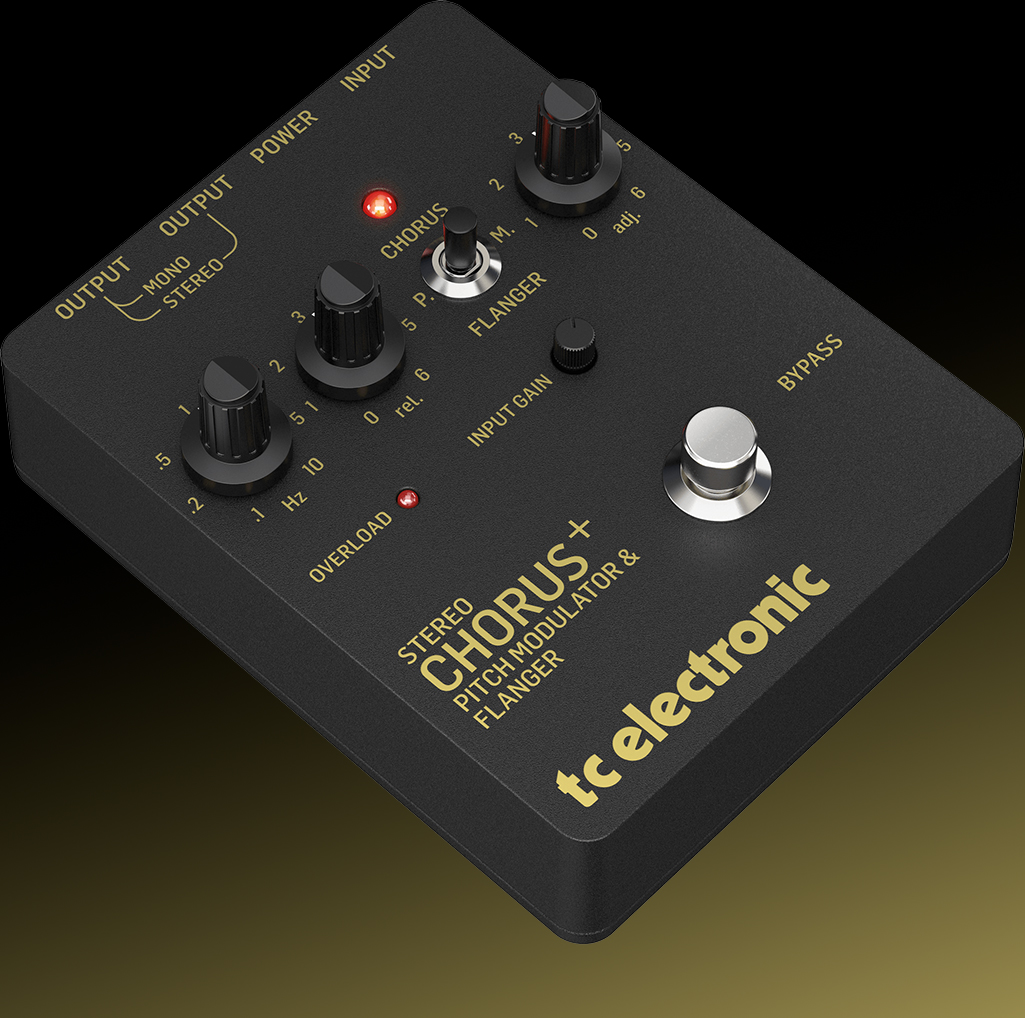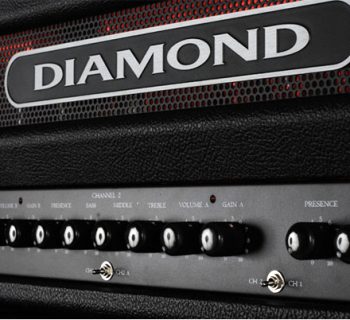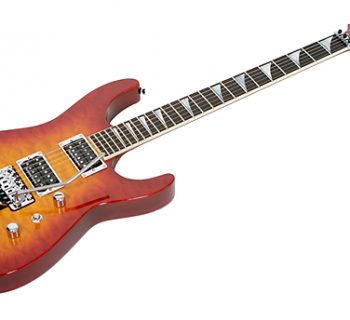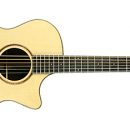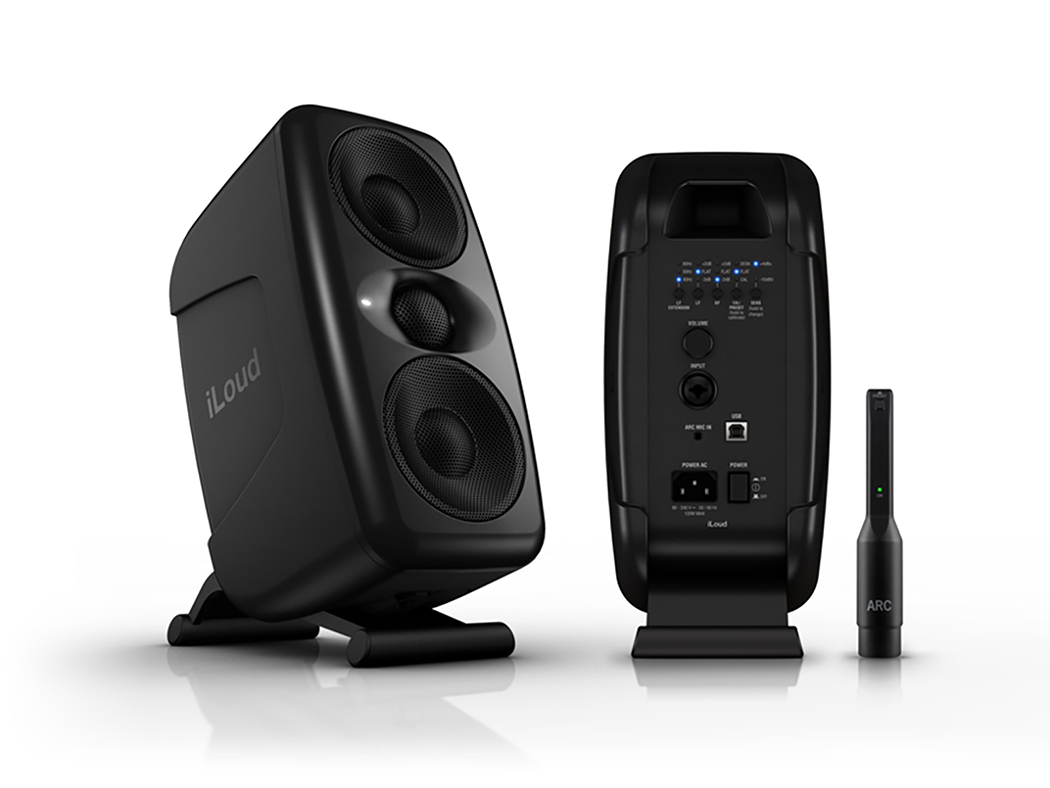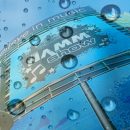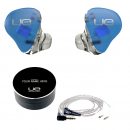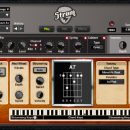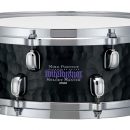It’s hard to imagine, but the legendary Stereo Chorus Flanger pedal was the very first TC Electronic product, and today, it’s still a bona fide gold standard for modulation effects. At the time of its arrival, way back in 1976, pedals were extremely noisy affairs that were guaranteed to compromise your tone unless you placed them in parallel effects loops or added noise gates, but the SCF bucked that trend and delivered studio quality, silent operation along with its gorgeous, lush, stereo chorus tone. You can’t name a legendary ‘80s guitar player who didn’t have an SCF in their rig, and even today, the classic TC Electronic chorus sound is highly desired and widely used.
For years, you couldn’t find a pedalboard without power coming from the classic Voodoo Lab Pedal Power 2 Plus, and for anyone who ever wondered why it had a three-prong outlet on it, obviously, you were one of the players who didn’t enjoy the incredible sound of the SCF pedal—which had an annoyingly hard-wired, grounded power cable permanently attached. If you used this pedal, you used that power supply, which was the deal breaker for some players (others spent for custom modifications to the pedal in order to work around this). All players can finally rejoice, however, because the revamped TC Electronic SCF Gold now runs off of standard 9V power supplies!
Unlike the fantastic 2290 P Dynamic Digital Delay reissue (reviewed here), which is a digital delay pedal, the freshly revised SCF Gold remains an analog modulation pedal featuring Bucket Brigade (BBD) circuitry just like the classic pedal. With a host of incremental improvements throughout the pedal, TC Electronic have taken one of the guitar world’s Holy Grail modulation pedals and improved its audio specs, made it easier to integrate, and preserved its legendary tone. Really, if you need a great modulation pedal that is straightforward in operation, there’s no reason not to buy this pedal. It’s the classic, only better.
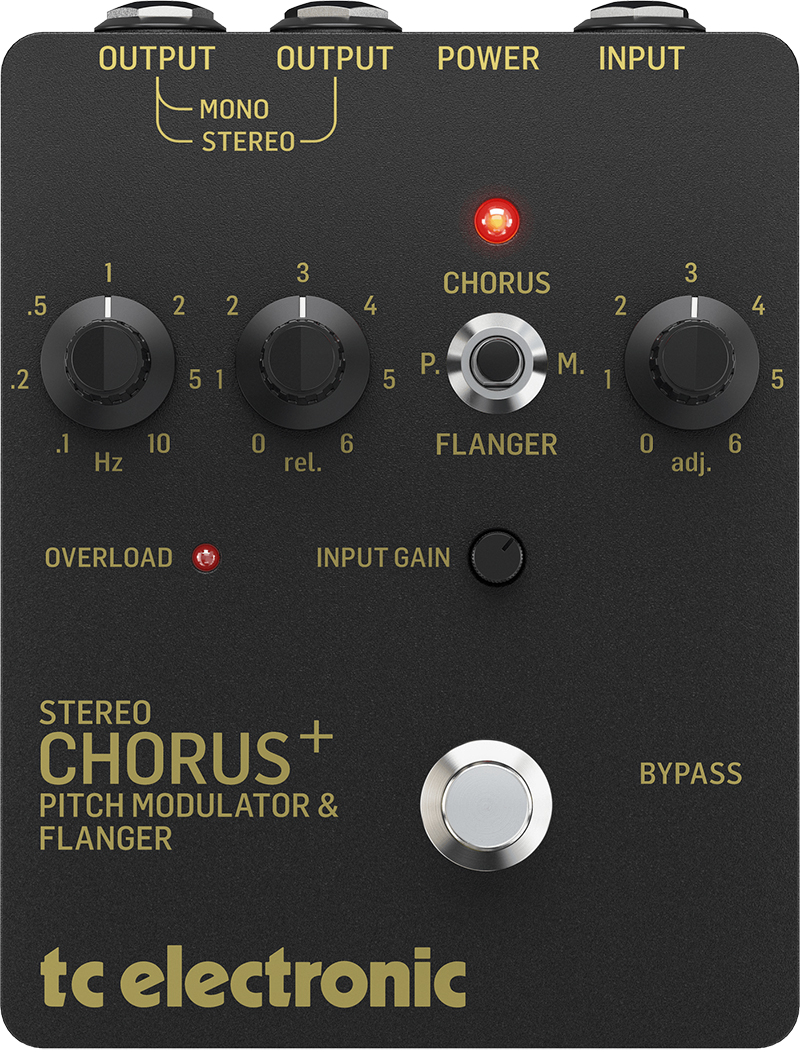 Features
Features
As its name implies, the TC Electronic Stereo Chorus Flanger Gold, commonly referred to as the SCF or SCF Gold in this case, is a modulation pedal that offers three distinct modes of operation: chorus, flanger, and pitch modulation, which is an in-between position on the controls that combines chorus and pitch vibrato to create a lighter chorus sound.
The pedal is mono in but features true stereo output—the most ideal way to luxuriate in this pedal’s sound, though most users will be well served by basic mono operation.
Controls are straightforward, and we’ll start by talking about the “Gold” enhancements:
- The hardwired power cable was replaced by a familiar 5/2.1 mm barrel connector for interfacing with standard 9V, 150 mA pedalboard power supplies.
- Originally hailed for its silent operation, the SCF Gold has an even lower noise floor. The input preamp circuit was updated to have more headroom, more dynamic range, and a slightly warmer bottom end.
- The LFO power LED was replaced with a larger, easier-to-see LED.
The rest remains the same, which is a good thing! You’ll find a recessed Input Gain control and clipping indicator LED so that you can dial the input in just right for a wide range of pickups.
Controls remain straightforward: Speed controls the rate of the sweep, and Width controls the range of the modulation sweep.
The Intensity control function varies based on the mode of operation:
Chorus mode: blends between chorus and clean signal.
Flanger mode: controls the strength of the comb filter phasing
Pitch Modulation mode: blends the chorus with vibrato.
Usability
The control layout remains virtually identical to the classic SCF, and the knobs retain their extremely solid feel. The rugged metal housing should withstand the same abuse that the classic pedal has enjoyed, and operation is as simple as any other modulation pedal, albeit with the additional functionality of a control for your input gain.
We love the upgraded power section, enabling connectivity with a standard pedalboard power supply. But players integrating this pedal into older rack systems should be aware of one feature removal: there is no external bypass jack on the SCF Gold. The classic SCF and SCF+ had a quarter-inch jack where you could directly attach a remote footswitch if the pedal lived on your back line or in a rack. Fortunately, today, if you’ve got pedals in a rack (or on a modern pedalboard), you presumably have a switching system for all of your audio loops. It’s a feature removal that truly shouldn’t impact anybody.
Sound
Lush. Sublime. Clean. Quiet. Unique. Give us your best adjectives for great modulation sounds and we’ll just say, “Yes, it’s in there.” Unless you’re trying to emulate the other classic modulation pedal of the era, the BOSS CE-1, because each of these classics has a sound that is uniquely its own. Simply, though, if you want to channel the sound of classic rock guitarists from Rush to the Police to Toto to Eric Johnson, this pedal will do it. Yeah, and that Petrucci guy, too, whose own signature TC Electronic Dreamscape pedal owes its legacy to the SCF sound.
Want that classic ‘80s hair band tone with chorus layered onto your Marshall, Mesa, or Soldano tone stack? The SCF Gold delivers this without making a muddy mess of your tight rhythms, and it does so ever so slightly better than the original due to the increased headroom and clarity in the bottom end.
Note: The “Gold” in the product name has nothing to do with TC Electronic’s famous “Golden Ratio,” which didn’t appear until later digital products from TC Electronic that had the ability for the width of the effect to be adjusted dynamically based on user adjustment of the rate (taking the guesswork out of dialing in great sounds). But the good news is that you can simply dial in that “Golden Ratio” sound for yourself, directly, as all TC Electronic modulation sounds harken back to the SCF. Go for a slow speed and a high width for that legendary chorus tone.
People don’t spend much time talking about the other modes: pitch modulation and flanger, not because they aren’t wonderful, but because the chorus is just so damn good that you hardly ever want to set the pedal any other way. But when you do venture into the other modes, there’s enough other stuff to get excited about, especially because you can have a flanger effect without an abundance of noise, and you can also dial in some Leslie-like effects and subtle tremolo as well.
We parted with our classic SCF and SCF+ pedals over the years and were unable to perform a true A/B direct comparison of our own, but having been using other TC Electronic modulation effects in their place for literally decades now, we have this sound well ingrained in our heads. But to be sure, we also reviewed a number of videos from other players performing direct comparisons of the old and new pedals, and agree that the sound is mostly indistinguishable from the classic. If you had two classic SCF pedals side by side today, they might sound slightly different in subtle ways due to the aging of analog components, and we did hear in one demo that the new SCF Gold sounded just a hair brighter than the classic pedal, but again, different samples of 30-years-old pedals might respond a little bit different as well. Bottom line: the SCF Gold sounds as gorgeous as the classic SCF pedal in every way that matters.
The fun thing about this pedal is that it sounds great nearly any way you dial it in. There’s so much to enjoy that you can easily understand why players eventually gravitated to other programmable devices in the TC Electronic product line. With so many great sounds on tap, it’s nice to have instant recall of many modulation sounds. But for straightforward access to fabulous modulation sounds, you can’t go wrong here.
Documentation and Support
The documentation is brief and clear, explaining each of the controls on the pedal. But as we noted in our 2290 P review, we would love to see an inclusion of some sample settings to guide newbies to those hallmark TC Electronic sounds.
Price
The TC Electronic SCF Gold sells for $159 street, which is an excellent price for the Holy Grail of modulation tone.
Contact Information
TC Electronic
www.tcelectronic.com

